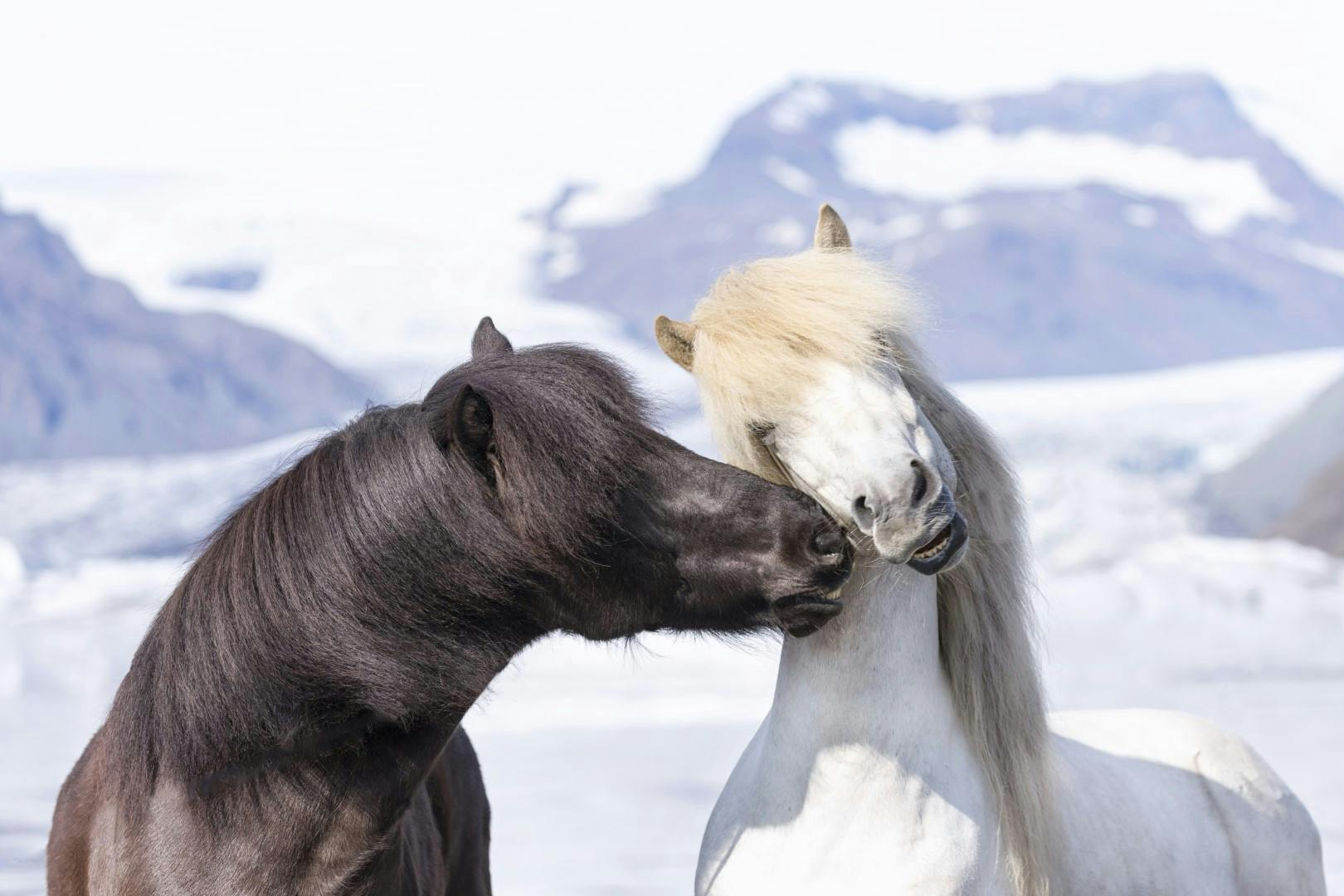
Photo: Christiane Slawik
Many different colors
The Icelandic horse is one of the most colorful breeds in the world.
The Icelandic horse has over 40 colors, up to 100 variations and, with only few exceptions, most of the known horse colors can be found within the breed. This fact adds both to the charming look of the Icelandic horse and to variation within the breed. Not only are all colors allowed in the studbook, but variety is encouraged, as the official breeding goal is simply to preserve all colors naturally occurring in the breed.
Although the commonly known statement “a good horse has no color” is true to a degree, people often have their favourites and will discuss the range and characteristics of colors extensively.
COLORS AND GENETICS
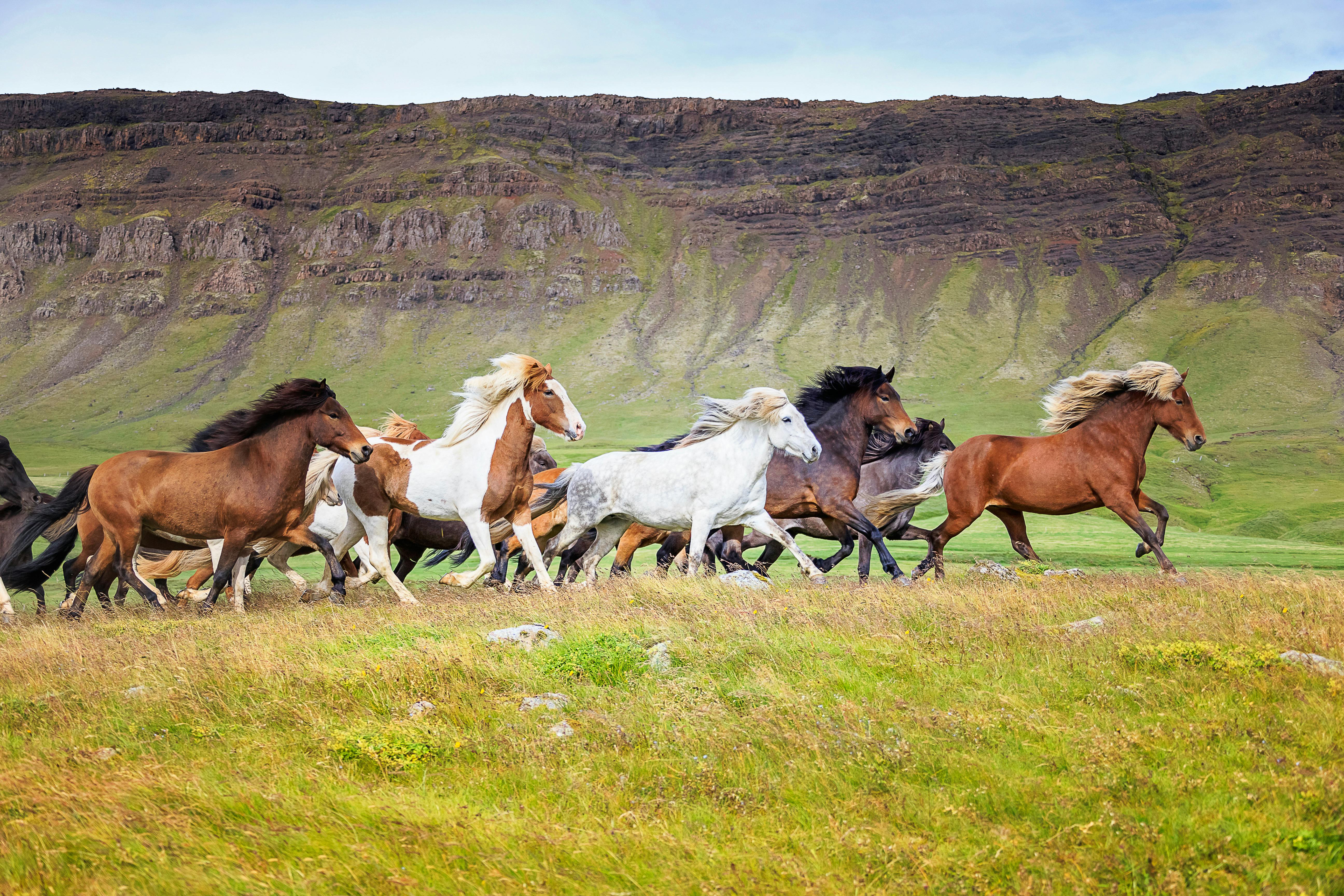
Photo: Christiane Slawik
The most common colors are red (chestnut) and black (brown). All horses have a base colour that can vay from black, red/chestnut or bay. Black horses can be either heterozygote – containing both the red and black genes – or fully black, where red offspring would be impossible. The red base color comes when both parents give the red gene, but it is not a dominant gene, meaning it only shows as red when in homozygous state, that is, when inherited from both parents. Therefore, if both parents are red, the foal can only be red.
VARIATIONS OF COLOR
On top of these base colors come all the variations, such as skewbald, dun, cream, grey, silver dapple, splash-skewbald or roan. These can often also be combined so the same horse can have a black base color, but have both the dun gene and the silver dapple gene, making the outcome much lighter than the base color prescribes. Grey can come on top of all colors and means that the horses turn white with age.
The silver dapple variation is hidden in the red base color, so although not shown, it can be present and inheritable. In bay and black base colors, it lightens the mane and tail as well as the body to some degree, causing the famous “chocolate color” when the base color is black. Although very pretty, it is crucial to breed silver dapple horses carefully as a link has been found between multiple congenital ocular anomalies (MCOA) and this color when the horse is homozygote.
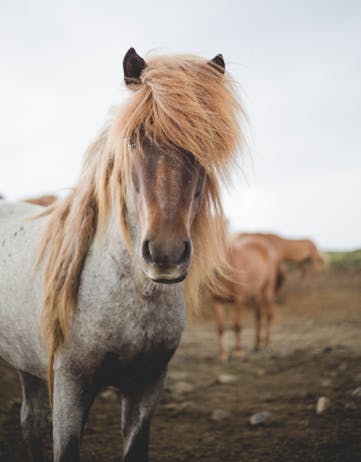
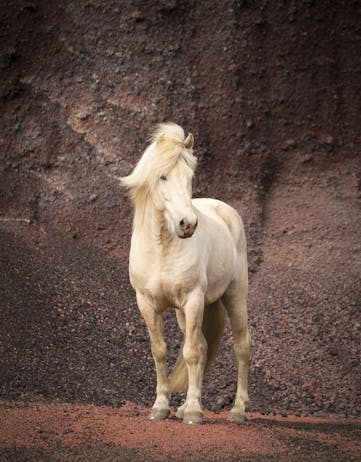
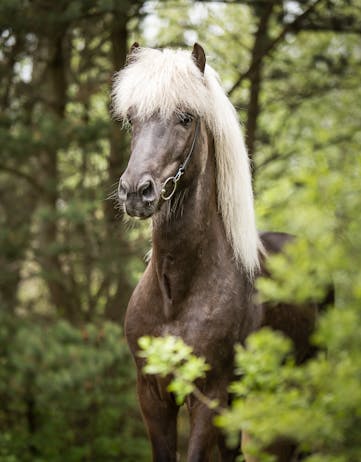
A red roan horse, a palomino horse and a silver dapple horse.
Photos by Gunnar Freyr, Christiane Slawik and Liga Liepina.
The rarest color variations found in Icelandic horses are sabino and roan. Until 2003, no sabino variation had ever been seen within the breed but a mare was then born in Germany with a specific sabino mutation. In 2013, a second, different sabino mutation occurred, this time in Iceland and in a stallion. Every sabino Icelandic horse can now be traced to one of those two horses.

Ellert frá Baldurshaga, born 2013, has a W21 mutation.
Photo: Daniel Larsen
The second rarest color variation of Icelandic horses is roan. Icelandic roans are often called color-changers, because the horses with this variation show their “real” color in summer coat as well as in full winter coat, but in spring and autumn the middle layer in their coat has no color, and is, in other words, white.
On top of all the possible colors and variations, multiple add-ons such as a blaze, star, snip, socks or other markings can also be found within the Icelandic horse breed, making each horse as unique on the outside as on the inside.